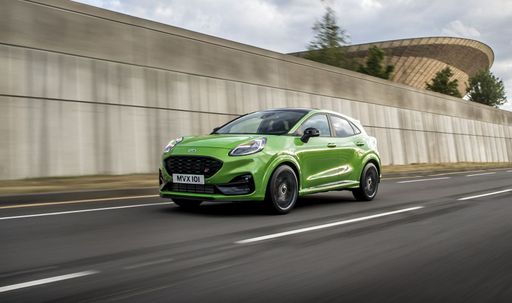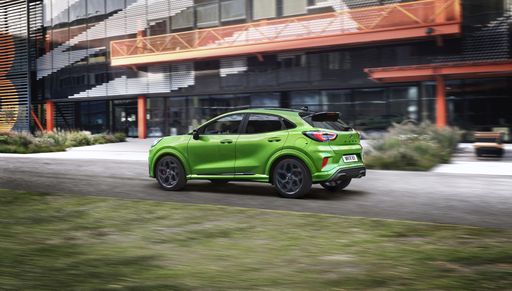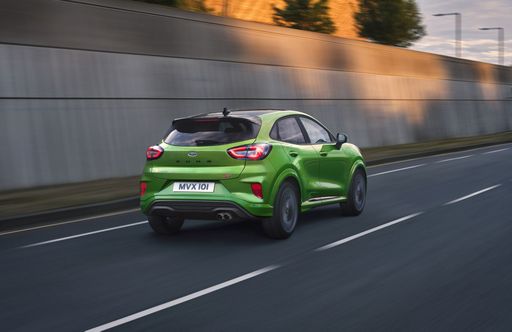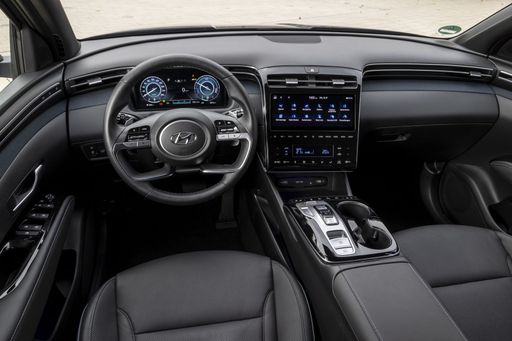Ford Puma vs Hyundai Tucson – Which car suits you better?
Everyday use, family trips or long-distance drives – here’s where the differences show.
Discover whether Ford Puma or Hyundai Tucson fits your lifestyle better.
Costs and Efficiency:
When it comes to price and running costs, the biggest differences usually appear. This is often where you see which car fits your budget better in the long run.
Ford Puma has a evident advantage in terms of price – it starts at 24800 £, while the Hyundai Tucson costs 30600 £. That’s a price difference of around 5863 £.
Fuel consumption also shows a difference: Hyundai Tucson manages with 1 L and is therefore significantly more efficient than the Ford Puma with 5.40 L. The difference is about 4.40 L per 100 km.
As for range, the Ford Puma performs clearly better – achieving up to 376 km, about 306 km more than the Hyundai Tucson.
Engine and Performance:
Power, torque and acceleration say a lot about how a car feels on the road. This is where you see which model delivers more driving dynamics.
When it comes to engine power, the Hyundai Tucson has a clearly perceptible edge – offering 252 HP compared to 168 HP. That’s roughly 84 HP more horsepower.
In acceleration from 0 to 100 km/h, the Ford Puma is minimal quicker – completing the sprint in 7.40 s, while the Hyundai Tucson takes 7.90 s. That’s about 0.50 s faster.
In terms of top speed, the Ford Puma performs minimal better – reaching 210 km/h, while the Hyundai Tucson tops out at 194 km/h. The difference is around 16 km/h.
There’s also a difference in torque: Hyundai Tucson pulls evident stronger with 367 Nm compared to 290 Nm. That’s about 77 Nm difference.
Space and Everyday Use:
Beyond pure performance, interior space and usability matter most in daily life. This is where you see which car is more practical and versatile.
Both vehicles offer seating for 5 people.
In curb weight, Ford Puma is to a small extent lighter – 1316 kg compared to 1520 kg. The difference is around 204 kg.
In terms of boot space, the Hyundai Tucson offers slightly more room – 620 L compared to 523 L. That’s a difference of about 97 L.
In maximum load capacity, the Hyundai Tucson performs distinct better – up to 1799 L, which is about 516 L more than the Ford Puma.
When it comes to payload, Hyundai Tucson to a small extent takes the win – 545 kg compared to 469 kg. That’s a difference of about 76 kg.
Who wins the race?
The Hyundai Tucson proves to be is largely superior and therefore becomes our DriveDuel Champion!
Hyundai Tucson is the better all-rounder in this comparison.

Hyundai Tucson
Ford Puma
The Ford Puma presents itself as a stylish compact SUV with a distinctive design that combines practicality with a dynamic driving experience. Its sleek lines and sporty aesthetics make it stand out on the road, while the interior offers a comfortable and tech-savvy environment. With an emphasis on efficiency and a smooth drive, the Ford Puma is well-suited for both urban commutes and countryside adventures.
details @ puma.fordpresskits.com
@ puma.fordpresskits.com
 @ puma.fordpresskits.com
@ puma.fordpresskits.com
 @ puma.fordpresskits.com
@ puma.fordpresskits.com
 @ puma.fordpresskits.com
@ puma.fordpresskits.com
Hyundai Tucson
The Hyundai Tucson is a standout choice in the compact SUV segment, offering a perfect blend of style, comfort, and practicality. Its modern design is complemented by a spacious interior that provides ample room for passengers and luggage alike. With advanced technology and safety features, the Tucson ensures a smooth and enjoyable driving experience.
details @ hyundai.news
@ hyundai.news
 @ hyundai.news
@ hyundai.news
 @ hyundai.news
@ hyundai.news
 @ hyundai.news
@ hyundai.news
 @ hyundai.news
@ hyundai.news

|

|
|
|
|
Costs and Consumption |
|
|---|---|
|
Price
24800 - 36300 £
|
Price
30600 - 46300 £
|
|
Consumption L/100km
5.4 - 5.9 L
|
Consumption L/100km
1 - 6.9 L
|
|
Consumption kWh/100km
13.1 - 13.9 kWh
|
Consumption kWh/100km
-
|
|
Electric Range
361 - 376 km
|
Electric Range
64 - 70 km
|
|
Battery Capacity
43 kWh
|
Battery Capacity
-
|
|
co2
0 - 135 g/km
|
co2
22 - 156 g/km
|
|
Fuel tank capacity
42 L
|
Fuel tank capacity
42 - 54 L
|
Dimensions and Body |
|
|---|---|
|
Body Type
SUV
|
Body Type
SUV
|
|
Seats
5
|
Seats
5
|
|
Doors
5
|
Doors
5
|
|
Curb weight
1316 - 1563 kg
|
Curb weight
1520 - 1889 kg
|
|
Trunk capacity
456 - 523 L
|
Trunk capacity
546 - 620 L
|
|
Length
4186 - 4226 mm
|
Length
4510 - 4520 mm
|
|
Width
1805 mm
|
Width
1865 mm
|
|
Height
1550 - 1555 mm
|
Height
1650 mm
|
|
Max trunk capacity
1216 - 1283 L
|
Max trunk capacity
1721 - 1799 L
|
|
Payload
367 - 469 kg
|
Payload
525 - 545 kg
|
Engine and Performance |
|
|---|---|
|
Engine Type
Electric, Petrol MHEV
|
Engine Type
Diesel MHEV, Petrol MHEV, Petrol, Full Hybrid, Plugin Hybrid
|
|
Transmission
Automatic, Manuel
|
Transmission
Automatic, Manuel
|
|
Transmission Detail
Reduction Gearbox, Manual Gearbox, Dual-Clutch Automatic
|
Transmission Detail
Dual-Clutch Automatic, Manual Gearbox, Automatic Gearbox
|
|
Drive Type
Front-Wheel Drive
|
Drive Type
Front-Wheel Drive, All-Wheel Drive
|
|
Power HP
125 - 168 HP
|
Power HP
136 - 252 HP
|
|
Acceleration 0-100km/h
7.4 - 9.8 s
|
Acceleration 0-100km/h
7.9 - 11.6 s
|
|
Max Speed
160 - 210 km/h
|
Max Speed
180 - 194 km/h
|
|
Torque
170 - 290 Nm
|
Torque
265 - 367 Nm
|
|
Number of Cylinders
3
|
Number of Cylinders
4
|
|
Power kW
92 - 124 kW
|
Power kW
100 - 185 kW
|
|
Engine capacity
999 cm3
|
Engine capacity
1598 cm3
|
General |
|
|---|---|
|
Model Year
2025
|
Model Year
2024
|
|
CO2 Efficiency Class
A, D
|
CO2 Efficiency Class
E, F, D, B
|
|
Brand
Ford
|
Brand
Hyundai
|
Is the Ford Puma offered with different drivetrains?
The Ford Puma is offered with Front-Wheel Drive.
The prices and data displayed are estimates based on German list prices and may vary by country. This information is not legally binding.
